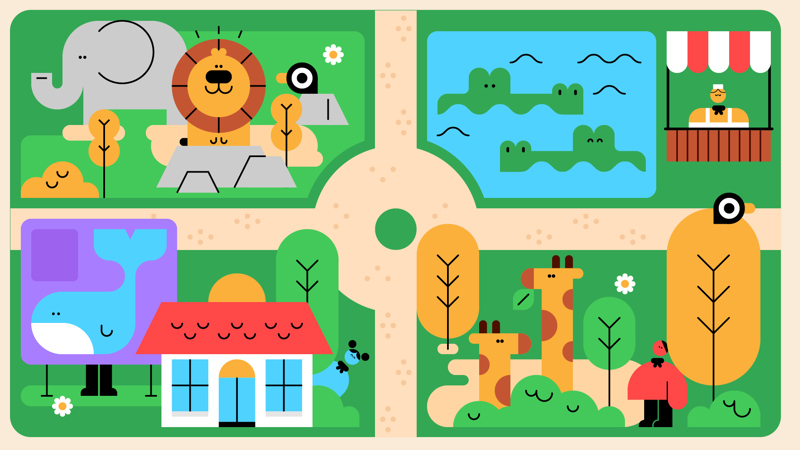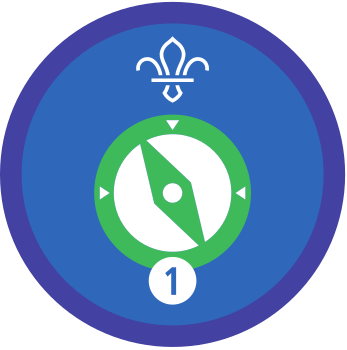
Location fixation
You’ll need
- Pens or pencils
- Maps of a local attraction
It’s great to play this game while preparing for a trip to a local attraction (such as a zoo, park, or museum). The best maps for this activity will be detailed, with words or symbols to label different areas.
- Split into small groups, and give each group a map and a pen.
- Each group should have someone to lead their game.
- The person leading each group should say something that’s on the map. They should start simply – for example, on a map of the zoo they could say ‘the gift shop’ or ‘the giraffe enclosure’. The group should try to find the place on the map as fast as possible. They could point, or circle it with a pen. The person leading the group should keep giving the groups places to find. They should make them more difficult as they go - for example ‘where you’d go if your friend needed first aid’ or ‘the building between the toilets and the lions’.
- When the group is confident at finding places, the person leading the game should choose a spot on the map, and describe what’s around them. For example, ‘I can see the lions in front of me, and hear the elephants to my left. I can see the toilets on my right, and smell the pizza restaurant’.
- The group should try to find the place the person leading the game is pretending to be standing. They should point to it.
- Repeat steps six and seven until everyone feels confident with the map.
Reflection
This game was a chance to try new things. Do you usually read the map when you visit places? Have you been to this attraction before, or is it a new place for you? How does it feel to visit somewhere new for the first time? How do you feel about the visit now you’ve had a look at a map and know a bit more about what to expect? How else do we get ready to try new things?
This game also let you practice your problem-solving. Did it get easier as you got used to the map? Was it easier to find certain places, or work out where a person was based on what they could see? What were the trickiest clues? How did you find places when you had lots of little bits of information to help you work it out? What would you do if you needed to work out where you were on the map in real life?
Safety
All activities must be safely managed. You must complete a thorough risk assessment and take appropriate steps to reduce risk. Use the safety checklist to help you plan and risk assess your activity. Always get approval for the activity, and have suitable supervision and an InTouch process.
You don’t have to split into groups with different clues – if you want to, one person can give the clues to all of the groups at once.
Once everyone in the group is feeling confident, they could take it in turns to give clues to each other. They could ask their teammates to find a named place, or pretend to be somewhere on the map and describe it.
Ask groups to only circle the places they want to visit while on the trip. Collect the maps at the end, and use them to play your trip to the location.
You could also do this activity while on your trip. You could choose to walk to (or point in the direction of) places, and groups could find themselves on a map depending on what’s really around them.
If you’re not able to visit a local attraction, you could play the game with a map anyway, or you could use famous attractions such as London Zoo or Disneyland.
The people giving clues should adapt their clues to their group – they might need to start easy, and make them more difficult as they go. It’s also up to you which map you choose – do some attractions have simpler maps than others?
Make it accessible
All Scout activities should be inclusive and accessible.
Going on a trip is a great opportunity to show that you can be safe while travelling. Depending on how you’re getting to your trip, you could also work towards some of the requirements of the Cub Road Safety Activity Badge. Could you show how to use the Green Cross Code or show how to behave safely as a car passenger on the way there?
